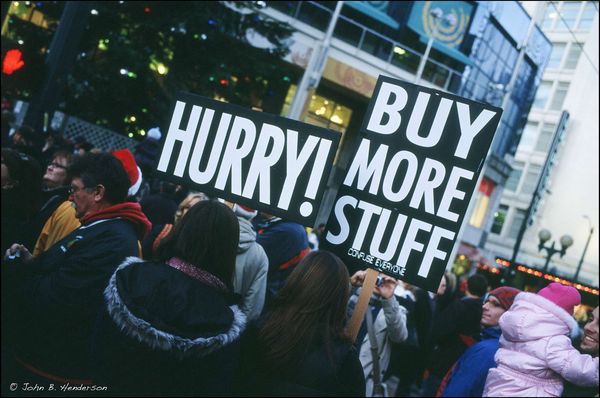Metal detectors can seem like a complex and confusing hobby to get into, but they don't have to be! Here is a basic guide on how to use a metal detector for beginners. First, you'll need to find a good spot to search.
Look for an area used by people before, such as a park or beach. Once you've found your spot, it's time to start scanning. Slowly move the metal detector back and forth across the ground, being careful not to miss any spots.
When the metal detector makes a beeping sound, it's found something! Dig up the object carefully and see what you've found! With a little practice, you'll be an expert at using a metal detector in no time.
- Get to know your metal detector.
- Please read the instruction manual with your device and become familiar with its parts and functions.
- Choose an area to search.
- Metal detectors can be used in parks, beaches, or your backyard.
- Adjust the settings on your metal detector according to the instructions in the manual
- Depending on what kind of object you're looking for, you'll need to adjust the sensitivity, discrimination, and ground balance levels accordingly.
- Start searching! Slowly wave the detector back and forth across the ground, being sure to cover a wide area as you go.
- If it starts beeping or flashing, which means it's found something!
- Dig it up and take a look! Use the shovel that came with your metal detector (or any other small shovel) to carefully dig around the object until you've unearthed it completely.
How Do You Use a Basic Metal Detector?
When looking for a basic metal detector, it is important to know how to use it properly. There are a few things that you need to keep in mind when using a metal detector. First, you must ensure that the area you are searching is clear of debris or rocks.
This will help the metal detector work more effectively. Next, you must sweep the metal detector back and forth in an even motion. It is important to move slowly as this can prevent the metal detector from missing objects.
Finally, when you hear the beep from the metal detector, slowly move it across the object until it becomes continuous. Once you have found the object, mark the spot and dig carefully so as not to damage it.
What Setting Should My Metal Detector Be On?
Assuming you are referring to the Garrett Ace 250, these settings should be used:
Discrimination Mode: All Metal Sensitivity/Depth
Adjustment: 6-8 inches.
Threshold Adjustment: Low
Notch Filter: Off in most cases, but can be used to filter out certain types of objects if desired.
How Do You Read a Metal Detector?
Assuming you would like tips on reading a metal detector: There are many ways to go about reading a metal detector. However, these are a few key tips that will help you get started.
- First and foremost, ensure your metal detector is properly assembled and all parts are in working order. If something seems amiss, it is likely affecting the performance of your device.
- Get to know the different settings on your metal detector so that you can adjust as needed based on terrain and conditions.
- Pay attention to the audio cues from your metal detector and any physical sensations (vibrations, etc.) to zero in on potential targets.
Is Metal Detecting Hard to Learn?
Metal detecting is easy to learn. It can be quite easy to get started with this fun and rewarding hobby. However, mastering metal detecting requires practice and patience, like anything worth doing.
But don't let that discourage you – anyone can learn to find hidden treasures with a little time and effort. Here are a few tips to help you get started:
Do research.
There's a lot of information about metal detecting, so take some time to read up on the basics before you go out and buy your first detector. This will help you understand how the equipment works and what to look for when scanning metals.
Practice makes perfect.
Don't expect to find buried treasure on your first try – getting good at metal detecting takes time and practice. The more you go out and use your detector, the better you'll become at finding hidden objects.
How to Use a Metal Detector for Beginners
Your Complete Beginners Guide To Metal Detecting [GETTING STARTED]www.youtube.com
How to Use a Metal Detector Settings
If you're new to metal detecting, it's important to know how to properly use your detector's settings. By understanding the different settings on your machine, you can maximize its performance and find more buried treasure! Here are some tips on how to use a metal detector's settings:
The first setting you'll want to adjust is the ground balance. This controls how sensitive your detector is to minerals in the soil. If the ground balance is set too high, your machine will constantly beep from all the minerals in the ground.
But if it's set too low, you won't be able to hear faint signals from deep targets. The best way to adjust the ground balance is by trial and error. Start with it turned down, then slowly turn it up until you find a happy medium.
Next, you'll want to adjust the discrimination setting. This filters out certain metals, so you don't waste time digging for trash items. For example, if you're only interested in finding coins, you can set the discrimination to filter out iron objects.
Or, if you're looking for jewelry, you can filter out copper coins. Again, this setting takes some trial and error to get right. Start with it turned off or at its lowest setting, then slowly turn it up until you hear fewer false signals.
Last but not least is the sensitivity setting. This one determines, how deep your detector can penetrate the ground. If it's set enough, you can pick up deeper targets.
But if it's too high, your machine will be more prone to false signals from small pieces of metal near the surface. Once again, the key here is experimentation. Please start with the sensitivity turned down, then slowly turn it up until you get consistent signals from targets at your desired depth range.
How to Use the Metal Detector App
You need a Metal Detector app if you're looking for a way to find hidden metal objects. This guide will show you how to use this handy tool. First, open up the Metal Detector app on your smartphone or tablet.
Then, hold your device close to the ground and slowly move it around. The app will use your device's sensors to detect any metal objects in the area. When an object is detected, the app will give you an audio signal and show the object's location on a map.
You can then dig up the object and see what it is! The Metal Detector app is a great tool for finding hidden treasures, but it can also be used for more practical purposes, like finding lost keys or detecting metal pipes in walls. So download it today and start hunting for hidden treasure!
How to Read a Metal Detector
When it comes to treasure hunting, a metal detector is one of the most important tools you can have. But how do you know if you're using your metal detector correctly? In this blog post, we'll show you how to read a metal detector so that you can start finding those hidden treasures!
First, let's look at the different parts of a metal detector: The control box is where all the magic happens. It's here that you'll find the power button, as well as controls for things like sensitivity and discrimination.
The coil is the part of the metal detector that detects metals. There are two types of coils – mono loop and double-D –and they each have advantages and disadvantages. The shaft is what connects the control box to the coil.
Some shafts are adjustable, which can be helpful if you want to use your metal detector for different purposes (like searching for coins in shallower water or looking for larger objects in deeper soil). Now that we know the different metal detector parts let's talk about how they work. Metal detectors work by sending out electromagnetic waves into the ground.
When these waves hit something metallic, they create a magnetic field around the object. The metal detector then picks up on this change in a magnetic field and gives off a signal that lets you know there's something down there. Pretty nifty.
Now that we understand how metal detectors work let's talk about how to use one. First, make sure that your discriminator is set properly. The discriminator helps to filter out unwanted signals from things like iron or aluminum foil (which would give false readings).
Once your discriminator is set properly, it's time to start sweeping! Slowly move your coil back and forth over an area until you hear a beep from your machine – this means there's something metallic down there! When you hear the beep, stop moving your coil and mark off the spot with some marker (a stick or piece of tape works well).
Then slowly dig around in that area until you find whatever it was that set off your alarm! And there you have it – now you know how to read a metal detector to find hidden treasures!
How to Use a Metal Detector for Gold
If you're like most people, the thought of using a metal detector to find gold sounds daunting. After all, gold is an extremely valuable commodity, and you don't want to damage it or lose it while you're out looking for it. However, with a little care and knowledge, using a metal detector to find gold can be a fun and rewarding experience.
Here are a few tips to help you get started:
- Choose the right metal detector. Not all metal detectors are created equal; some are better suited for finding gold than others. Please do your research before purchasing a metal detector to make sure it can detect small pieces of gold.
- Use the appropriate settings. When starting, it's important to use the correct settings on your metal detector so that you don't miss any pieces of gold. Consult your user manual for guidance on adjusting the settings based on the type of material you're looking for.
- Be patient. Finding gold takes time and patience – don't get discouraged if you don't find anything immediately. Take your time and methodically scan each area until you locate something worth digging up.
- Dig carefully. Gold is often found in areas with other minerals, so be careful when digging not to damage any potential nuggets in the process.
Use a small shovel or trowel to loosen the soil around the object, then gently sift through the dirt until you have recovered your prize.
Conclusion
The process can seem daunting if you're new to metal detecting. But don't worry! This guide will show you how to use a metal detector step by step.
First, ensure you have the following supplies: a metal detector, headphones, and digging tools. Once you have your equipment, find a good location to search. Parks and beaches are usually good spots for beginners.
When you're ready to start searching, hold the metal detector in front of you and slowly sweep it back and forth across the ground. If the detector makes a beeping sound, it finds something metallic buried beneath the surface. Use your digging tool to excavate the object carefully.
Once you've unearthed it, look to see what it is. Often, it will simply be an old bottle cap or aluminum foil. But sometimes, you may find something more valuable, like coins or jewelry.
With a little practice, you'll be an expert at using a metal detector in no time!



















